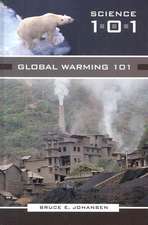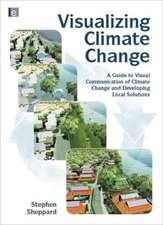An Introduction to Trenchless Technology
Autor Steven R. Krameren Limba Engleză Paperback – 25 noi 2012
Preț: 637.13 lei
Preț vechi: 749.56 lei
-15% Nou
Puncte Express: 956
Preț estimativ în valută:
121.92€ • 127.55$ • 101.28£
121.92€ • 127.55$ • 101.28£
Carte tipărită la comandă
Livrare economică 02-16 aprilie
Preluare comenzi: 021 569.72.76
Specificații
ISBN-13: 9781461572985
ISBN-10: 1461572983
Pagini: 240
Ilustrații: XIV, 224 p.
Dimensiuni: 152 x 229 x 13 mm
Greutate: 0.33 kg
Ediția:Softcover reprint of the original 1st ed. 1992
Editura: Springer Us
Colecția Springer
Locul publicării:New York, NY, United States
ISBN-10: 1461572983
Pagini: 240
Ilustrații: XIV, 224 p.
Dimensiuni: 152 x 229 x 13 mm
Greutate: 0.33 kg
Ediția:Softcover reprint of the original 1st ed. 1992
Editura: Springer Us
Colecția Springer
Locul publicării:New York, NY, United States
Public țintă
ResearchCuprins
1 Introduction and Overview.- 1.1 Need for Trenchless Technology.- 1.2 Horizontal Boring Techniques.- 1.3 General Procedures.- 1.4 Selection of Method.- 1.5 Limitations.- 1.6 Future Outlook.- 1.7 Looking Ahead.- 2 Background.- 2.1 Early Underground Work.- 2.2 The Stimulus of the Industrial Revolution.- 2.3 Early Trenchless Methods—1890–1960.- 2.4 Trenchless Methods—1960–1985.- 3 Creating the Hole.- 3.1 Thrust Boring.- 3.2 Impact Moling.- 3.3 Impact Ramming.- 3.4 Rock Hammer.- 3.5 Auger Boring.- 3.6 Wet/Slurry Boring.- 3.7 Fluid Jet Cutting.- 3.8 Pipe Jacking and Microtunnelling.- 3.9 Rotary/Directional Drilling.- 4 Steerable Horizontal Boring.- 4.1 Methods of Steering the Bit.- 4.2 Available Systems.- 4.3 Planning the Job.- 4.4 Applications.- 4.5 Preventing and Controlling Problems.- 5 Pipe Jacking and Microtunnelling.- 5.1 Pipe Jacking.- 5.2 Microtunnelling.- 6 On-Line Replacement and Structural Renovation.- 6.1 Introduction.- 6.2 Options.- 6.3 On-Line Replacement.- 6.4 Renovation.- 7 Instrumentation Systems for Guided Boring.- 7.1 Unguided Systems.- 7.2 Guided Boring.- 7.3 Guidance Instrumentation Systems.- 7.4 Equipment Selection.- 7.5 Needs and Future Trends.- 8 Economics of Trenchless Technology.- 8.1 Economic Costs.- 8.2 Open-Cut Method.- 8.3 Economic Studies and Models.- 8.4 Effect of Drilling Rate.- 8.5 System Utilization.- 9 Investigation, Routing, and Location.- 9.1 Selection of Trenchless Equipment.- 9.2 Planning and Design of Project.- 9.3 Job Implementation and Precautions.- 10 Case Histories.- 10.1 Case History 1: Horizontal Drilling.- 10.2 Case History 2: Guided Piercing Tool.- 10.3 Case History 3: Microtunnelling.- 10.4 Case History 4: Pipeline Insertion Machine.- 10.5 Case History 5: UTILX Guidedril Tunnelling Machine.- 10.6 Case History 6:Microtunnelling.- 10.7 Case History 7: Renovation.- 11 Future Needs.- 11.1 The Future in Perspective.- 11.2 Attitudes and Awareness.- 11.3 Technical Needs.












